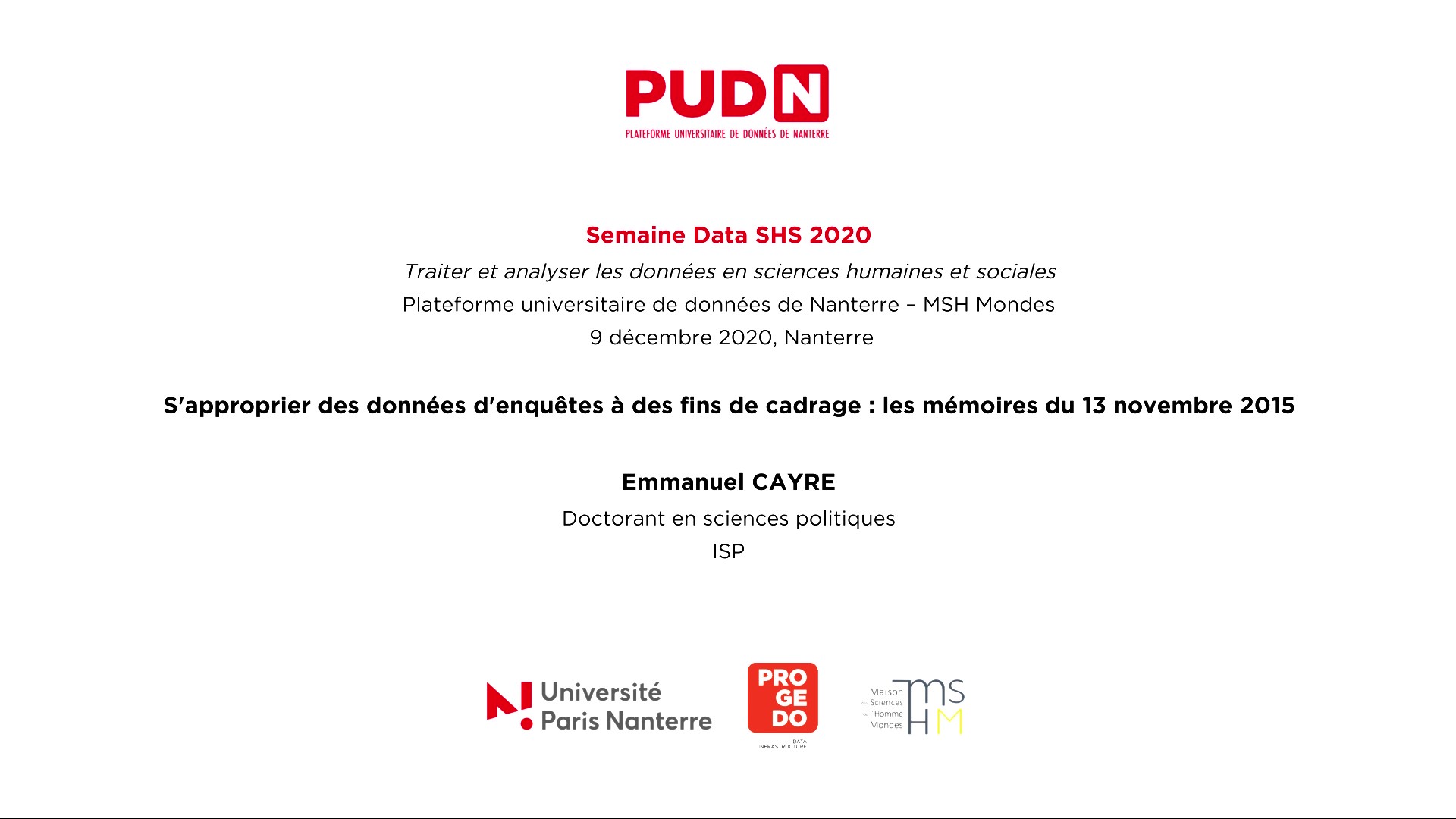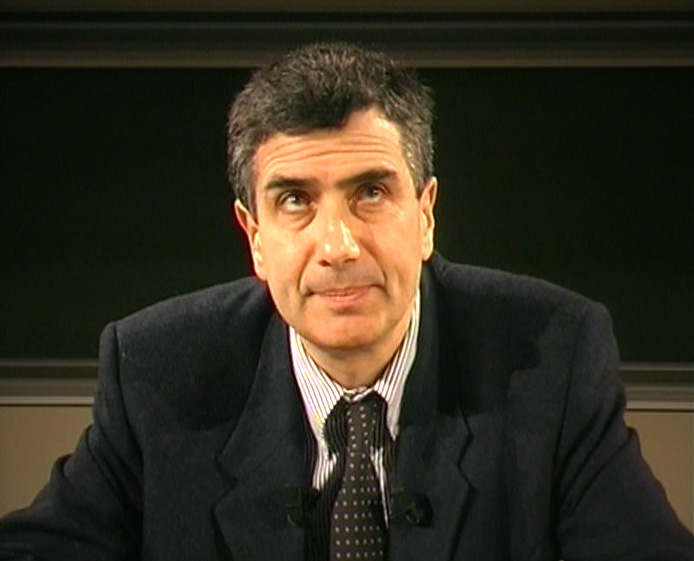Notice
Rendre visible ou occulter ? / To show or to hide?
- document 1 document 2 document 3
- niveau 1 niveau 2 niveau 3
Descriptif
Rendre visible ou occulter ?/ To show or to hide?
Discutante/Discussant : Margareth da Silva Pereira(Universidade federal do Rio de Janeiro)
Brodwyn Fischer (University of Chicago)
Counting the Mucambópolis: Representation and Absence in Recife’s InformalCityscapes
Emanuel Giannotti (Universidad de Chile, Facultad de Arquitectura y Urbanismo)The callampas as a public issue. Santiago de Chile, 1947-1970
Antonio Azuela et Erika Alcantar (Universidad Nacional Autónoma de México)Making informality invisible. Ignoring irregular urbanisation in the MexicanMiracle (1951-1966)
Counting shacks and their inhabitants: the production and use of statistics on the informal city in the 20th century
After a first workshop (3-4 July 2017) examining how legal and regulatory categories of the informal city were constructed between 1900 and 1950, the research team ‘Informal city in the 20th century’ now turns its attention to the documentation produced to describe these areas thus categorised : with the informal city diagnosed as a problem, documentary material was therefore needed in order to define and hence deal with it. This involved counting, mapping, and undertaking social and photographic surveys. Estimating the extent of the problem formed one of the public authorities’ main preoccupations : this two-day workshop will therefore explore how public authorities sought to both measure and describe it.
How did the existing public statistics, in particular the general population censuses, include or omit these housing types and their inhabitants? How were informal housing units counted, when such units by definition left few administrative traces? How did the quantitative descriptions relate to other forms of representations, notably the maps? Examining such documents enables us to study how the administrative categories of the informal city were implemented in practice and, where relevant, the difficulties that such categories then presented to agents on the ground.
Which administrative services undertook such population counts? Where relevant, which organisations did the public authorities entrust with this task? The workshop will also examine population counts and censuses produced by non-public organisations (religious groups, associations or those with responsibility for a specific service) which took it upon themselves to gather such material themselves.
When and how were censuses undertaken of people living in these areas? What were the aims behind such operations (containing growth, monitoring the population, rehousing etc.)? How was this documentation then used? The workshop will examine in particular the subsequent use made of the personal details gathered. Another theme of possible interest is the lifespan of aggregated figures when reproduced from one document to the next.
Open to all, this two-day event is the second workshop organised by the four-year collaborative research project entitled ‘The informal city in the 20th century. Urban policies and governing urban populations’
Dénombrer les baraques, recenser leurs habitants.
Production statistique et usages des chiffres sur la ville irrégulière au 20e siècle
Après avoir examiné, lors du précédent atelier (3-4 juillet 2017), la construction juridique et réglementaire des catégories de la ville irrégulière dans la première moitié du xxe siècle, l’équipe de recherche « Ville informelle au xxe siècle » aborde la documentation produite pour décrire les quartiers ainsi catégorisés. Une fois le problème de la ville irrégulière constaté, il faut en effet le documenter, en vue de le définir et de le traiter. Comptage, cartographie, enquêtes sociales, relevés photographiques sont alors mis en œuvre. L’estimation de l’ampleur du problème est une des préoccupations importantes des pouvoirs publics. Durant ces deux journées, nous explorerons ainsi la manière dont ceux-ci cherchent à le mesurer et le décrire.
Comment les statistiques publiques préexistantes, notamment les recensements généraux de population, prennent-elles en compte ou non ces habitats et leurs populations ? Comment procède-t-on pour compter des logements qui, par définition, laissent peu de traces administratives ? Comment les descriptions chiffrées interagissent-elles avec d’autres formes de représentations, cartographiques notamment ? L’examen de ces documents permet aussi d’étudier la manière dont les catégories administratives de la ville irrégulière sont effectivement mises en œuvre et les problèmes que celles-ci posent aux acteurs de terrain.
Quelles sont les administrations qui procèdent à ces dénombrements ? Le cas échéant, à quelles organisations les pouvoirs publics confient-ils cette mission ? On s’intéressera également aux dénombrements et recensements produits de leur propre initiative par des organisations non publiques (associations religieuses ou laïques, entreprises en charge d’un équipement technique).
Quand et comment procède-t-on au recensement des populations de ces quartiers ? Quels sont les objectifs d’une telle opération (endiguement du phénomène, contrôle des individus, relogement, etc.) ? Quels usages fait-on ensuite de ces documents ? On examinera notamment les usages successifs des données nominatives collectées. On pourra également s’intéresser à la postérité des chiffres agrégés, repris de document en document.
Working languages : English and French
Organisers : La ville informelle au XXe siècle
https://informalcity.hypotheses.org
Thème
Documentation
Liens
Dans la même collection
-
Quelques recensements de bidonvilles en pratiques/ Case studies of shantytown censuses
Quelques recensements de bidonvilles en pratiques/ Case studies of shantytown censuses Discutant/Discussant : Laurent Coudroy de Lille (École d’urbanisme de Paris) Rafael Soares Gonçalves
-
L’objet et la mesure/ Objects and Measures
GuiffardThomasL’objet et la mesure/ Objects and Measures Discutante/Discussant : Claire Zalc (IHMC, CNRS, EHESS) Thibault Bechini (Université Paris 1 Panthéon-Sorbonne, CRALMI) Les pavés du progrès :
-
Acteurs et motifs des recensements de bidonvilles/ Shantytown censuses: Actors and Motives
Acteurs et motifs des recensements de bidonvilles/ Shantytown censuses: Actors and Motives Discutante/Discussant : Morgane Labbé (EHESS, CRH) Éric Denis (CNRS, Géo-Cités) et Véronique
-
Introduction
ThénaultSylvieWelcome/ouverture Sylvie Thénault (directrice adjointe du CHS) Introduction Charlotte Vorms (Université Paris 1 Panthéon-Sorbonne, CHS, IUF) Counting shacks and their
Sur le même thème
-
S’approprier des données d’enquêtes à des fins de cadrage: les mémoires du 13 novembre 2015 - PUDN
CayreEmmanuelA partir d’une recherche doctorale en cours sur les mémoires des attentats du 13 novembre 2015, cette présentation défend l’intérêt de s’approprier les résultats de grandes enquêtes nationales afin de
-
L’objet et la mesure/ Objects and Measures
GuiffardThomasL’objet et la mesure/ Objects and Measures Discutante/Discussant : Claire Zalc (IHMC, CNRS, EHESS) Thibault Bechini (Université Paris 1 Panthéon-Sorbonne, CRALMI) Les pavés du progrès :
-
Quelques recensements de bidonvilles en pratiques/ Case studies of shantytown censuses
Quelques recensements de bidonvilles en pratiques/ Case studies of shantytown censuses Discutant/Discussant : Laurent Coudroy de Lille (École d’urbanisme de Paris) Rafael Soares Gonçalves
-
Introduction
ThénaultSylvieWelcome/ouverture Sylvie Thénault (directrice adjointe du CHS) Introduction Charlotte Vorms (Université Paris 1 Panthéon-Sorbonne, CHS, IUF) Counting shacks and their
-
Acteurs et motifs des recensements de bidonvilles/ Shantytown censuses: Actors and Motives
Acteurs et motifs des recensements de bidonvilles/ Shantytown censuses: Actors and Motives Discutante/Discussant : Morgane Labbé (EHESS, CRH) Éric Denis (CNRS, Géo-Cités) et Véronique
-
Enregistrer la terre, gouverner la population dans l'Empire ottoman
DündarFuatSéminaire : "Administrer et gouverner en Turquie depuis les Tanzimat" Mardi 13 Septembre 2011, à 17h à l'IFEA Fuat Dündar (Chercheur associé à l'IFEA) "Araziyi kaydetmek, Nüfusu 'saymak': Osmanli
-
L'homme dénombré : arithmétique des populations
VéronJacquesConférence du 24 février 2000 par Jacques Véron. La science de la population naît de la découverte d'un ordre de mortalité. "La mortalité humaine n'obéit pas seulement à des considérations








